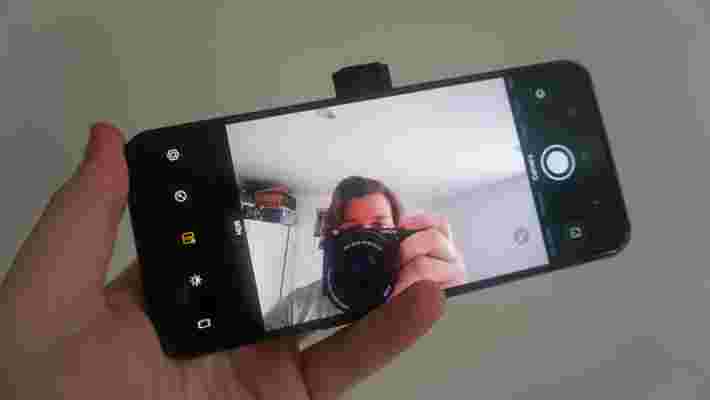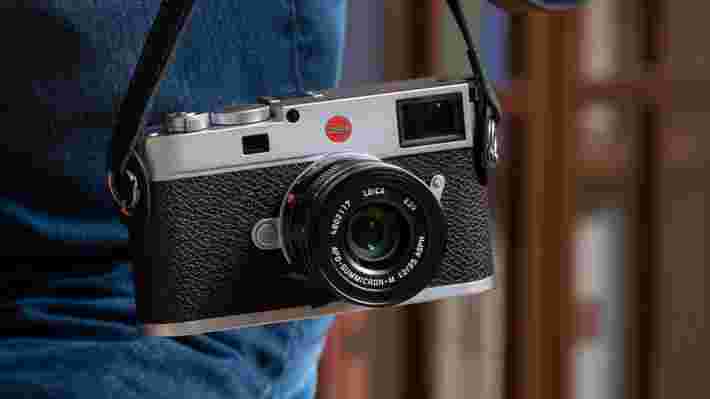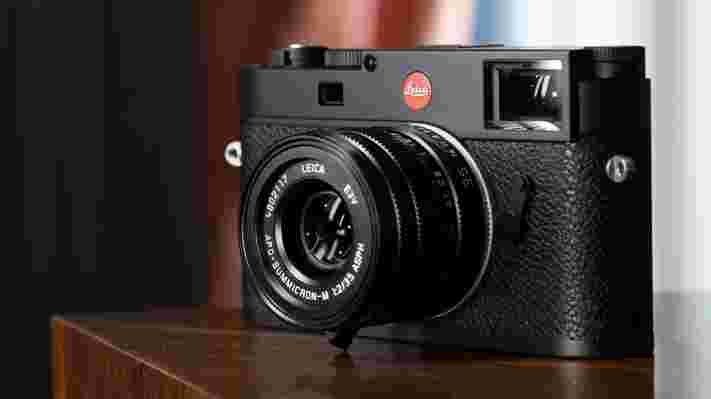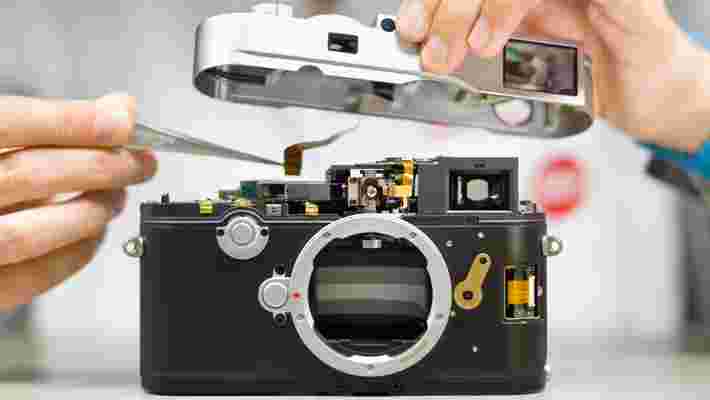Could popular Android phone maker OnePlus be working on a gaming smartphone ? That's what a new rumor suggests, and it comes from a pretty compelling source.
Digital Chat Station is a popular Chinese leaker with a great track record, and they recently posted on social media platform Weibo to give some juicy OnePlus information. Apparently, the company is working on a new line of phones "focusing on performance and gaming experience".
This would sit alongside the company's main series of phones of which the next, the OnePlus 10 , is expected soon, as well as the OnePlus Nord range of mid-range and budget devices.
According to Digital Chat Station, a "flagship processor" and "high-quality direct screen" are OnePlus' priorities for the smartphone, which is... not exactly surprising, given those are two of the most important aspects for gaming.
But we've seen plenty of mobiles aimed at the gaming niche in our time, and some are far better for a quick game of Call of Duty: Mobile, a Fortnite stint or a long binge of Rome: Total War than others. In that spirit, here are some top features and specs we'd like OnePlus to introduce to make its rumored gaming phone competitive.
1. Physical triggers
Physical triggers can make such a dramatic impact on the way you play a game, that we're always surprised when gaming mobiles come out without them.
If you're playing a competitive online shooter, the ability to easily tap a button on the edge of the screen, instead of having to reach onto the display to press in a certain area, makes a marked difference in how well you can play.
It very literally means the difference between life and death in fast-paced matches, and we always find we perform better when using a phone with physical edge buttons.

A great example is the Nubia Red Magic 6 - though it wasn't the best in the world in the software or camera departments, it was incredible for gaming, simply because it had easy-to-use side triggers.
We need to see this kind of feature in a OnePlus gaming phone to ensure it stands a chance against other rival mobiles that have this feature. It's not an unrealistic hope either, because OnePlus actually has designed clip-on triggers for mobile gaming that went on sale in India, so it's clearly something the company has considered.
2. A huge battery
Great gaming phones have bright, high-res displays with fast refresh rates, as that improves the way you game. According to the initial rumor, this is something OnePlus is already working on, but there's something else we need to see. A big battery.
Big screens can drain charge quickly, especially with flashy features like a high resolution and fast refresh rates, and we've been in countless games where a low-battery alarm will go off in the midst of a frantic fight.
If the OnePlus gaming phone is to impress us, we'd like to see a chunky power pack to keep it running through long gaming binges. We're talking 5,000mAh at a minimum, but maybe 6,000mAh or even higher if possible.
Charging speed isn't as important for gaming, though we're big fans of fast-powering phones in general.
3. A pop-up camera

Traditionally, gaming phones have housed their front-facing cameras in the bezel, so no notch or 'punch-hole' has to break up the screen, which can be annoying for gamers.
That's not always been the case though - for example, the Xiaomi Black Shark 4 has a punch-hole, which makes it far from ideal for playing games.
Admittedly phones with big bezels often look a bit old-school, as current design trends in mobiles have pushed towards minimal bezels. So it would seem there's no perfect solution...
cept there is, and it's one Lenovo stumbled upon. Its Legion Gaming Phone Duel has a pop-up section to hide the selfie snapper in the body of the phone, ensuring it's out of the way when you don't need it.
That's not a feature exclusive to Lenovo, and quite a few companies have experimented with pop-ups. Even OnePlus has, in the case of the OnePlus 7 Pro family.
So we'd like the company to dust off its pop-up tech for its gaming phone, so we can have an unbroken screen and minimal bezel.
Why the Leica M11 is a glorious relic in an age of camera phone convenience
Five years isn't a long time in Leica-land, but the photography world has been turned upside down since the Leica M10 landed in January 2017. Since then, computational photography and AI editing have transformed amateur snapping – and that's why the new Leica M11 now stands out as a relic from a bygone age.
Yet the fact that the Leica M11 is a complete anachronism – a steam train in a world of Virgin Hyperloops – only heightens its appeal. This is a camera with no autofocus, let alone busy little algorithms piecing together the best bits from your burst of photos. But its manual-only shooting and rangefinder focusing preserve a style of taking photos that's the polar opposite of, say, Google's Magic Eraser.

Some will argue that Leica's M-series cameras are overpriced trophies for nostalgists, or badges of honor for wealthy camera snobs. But while it's hard to disagree that the Leica M11 is overpriced at $8,995 / £7,500, it's also possible to appreciate that it exists. I'll probably only ever own quartz watches, but that doesn't mean I can't dream of buying a hand-wound Tag Heuer Carrera.
The difference between the Leica M11 and a lot of other vintage tech is that its nostalgia appeal isn't just skin-deep. It's a perfectly-evolved tool that adds modern conveniences in just the right places, and offers something genuinely different from anything else out there. And with a direct lineage that stretches back to the Leica M3 in 1954, it's also pretty unique in the world of consumer tech.
A connected experience
So what makes the Leica M11 special? Full disclaimer: we haven't yet fully tested one, so we can't yet comment on the performance of its new 61MP full-frame sensor. But the appeal of the M-series concept is in its size, rangefinder focusing and simplicity, and all of those are still intact on Leica's new model.
Like its predecessors, the M11 offers a classic rangefinder experience with an optical viewfinder. Rather than using an autofocus system to lock onto your subject, its viewfinder has a central window that brings together two ghost images. Turn the focus ring to bring these two images together, and when they line up perfectly, you're in focus.
This sounds complicated, but it quickly becomes second nature – and it brings a couple of advantages. First, the optical viewfinder lets you see around the edges of your frame, which can make you feel more connected to a scene compared to staring down the barrel of an EVF. Also, thanks to the lens's depth-of-field scale, you can use 'zone focusing' to help you shoot quickly without needing to focus at all.
It's a more complex point-and-shoot experience than a phone, but it prompted legendary street photographer Henri Cartier-Bresson to call his Leica rangefinder "the extension of my eye". The M-series strips away buttons, settings, distractions and automations, while keeping you connected to the traditional photo-making process – it's good to see that survive in a world of computational photography, despite the M11's prohibitive price tag.
And the M11 is much more than just a fusty throwback; after all, you could just buy a second-hand Canon AE-1 film camera for a truly vintage experience. For the first time on an M-series camera, the M11 comes with 64GB internal storage – a feature that continues to be strangely lacking on most mirrorless cameras – which helps to compensate for its lack of a second card slot. Its new 61MP sensor also gives it a very high resolution for a camera of this size, and gives you the option of shooting 36MP or 18MP snaps using the full sensor area (albeit with pixel binning).
Perfectly formed
The other benefit of the Leica M11's manual-only approach is size. Because Leica's rangefinder lenses lack autofocus motors, and because the camera itself doesn't have features like in-body image stabilization, it's very compact for a full-frame camera. The size difference isn't quite as noticeable compared to today's mirrorless cameras as it was back in the SLR days, but the M11 is still half the thickness of a Sony A7 IV , with much smaller lenses.
This makes it about the same size as the Nikon Z fc , another retro camera with a more sensible price tag, but one that has a smaller APS-C sensor and inferior lenses. A big part of the Leica M11's appeal is undoubtedly its stunning, yet tough, design, but this again serves a practical purpose – it's ideal for street and reportage photography.

While the Leica M11 is certainly an indulgence, that price tag can at least in part be rationalized with the knowledge that this is a camera that's been built to last a lifetime. The only odd thing is that the black version's housing is partly made of aluminum, as opposed the silver mode's classic brass-and-magnesium construction, yet the two models cost the same.
Despite this oddity, the M11's heritage makes it pretty unique in the world of consumer tech. There are very few current lines with a lineage that stretches directly back to the 1950s – a quick poll of the TechRadar team raised the Braun LE01 wireless speaker (a resurrection of its LE speakers from the 50s), the B&O Beolit 20 (based on the Beolit radios of the 1930s), and the Klipsch Heritage Heresy IV (a successor to the 1957 loudspeaker) as similar examples. Yet none of those are quite as iconic as the Leica M-series.
Keeping the manual flag flying
Does this mean we recommend buying a Leica M11? No – that would be ridiculous given its price tag, and as mentioned we haven't yet put it through its paces on the streets. Realistically, the sensible choice for anyone who wants to enjoy the rangefinder experience with modern conveniences is the Fujifilm X-Pro3 – you can buy five of those for the price of an M11, and the X-series has some lovely prime lenses.
But this also doesn't mean that, in a world of falling camera sales and increasingly homogenous shooting experiences, we can't celebrate the existence of the Leica M11. Sure, it's only able to justify its existence by mining its luxury brand and heritage, but it's no cynical cash-in either. It's a subtly-evolved photography tool that still has merit in 2022, almost 70 years on from its arrival.

In many ways, this all makes the M11 the anti-Google Pixel. From the Google Pixel 4 in 2019, Google pioneered a form of computational photography, with features like Night Mode, that completely automates the snapping experience.
Today's camera phones are brilliant tools for most people, but that needn't be at the expense of niche classics that are much more challenging to master, and a lot more satisfying. Despite its slightly ridiculous price tag, it's good to see that the Leica M11 remains a torch-bearer for that kind of shooting experience.
Hacker somehow mods Game Boy Camera to work with Canon DSLR lenses
It may be almost 24 years old, but that doesn't mean the Game Boy Camera can't evolve – thanks to some hacking from a persistent YouTuber, the Game Boy accessory has been shown to work with Canon DSLR lenses (albeit with a few understandable trade-offs).
The creation made by YouTuber Conorsev might not replace your Google Pixel 6 Pro – the Game Boy Camera is, after all, a grayscale-only affair with a 0.1MP resolution. But if you're looking for a more challenging photography project than the usual bokeh ball experiments, it could be a fun one to tackle.
The project has to overcome two big challenges. Firstly, there was the hurdle of importing the Game Boy Camera's photos from the handheld console itself. The camera, which plugs into the Game Boy's cartridge slot, is designed to only send its image data to the Game Boy Printer (smart thinking, Nintendo).
But this was overcome by soldering a cheap Arduino board to the Printer's cable to intercept the data, then using a Game Boy Emulator to build a digital version of the image.
The more challenging part of the hack was replacing the Game Boy Camera's wide-angle lens with DSLR glass. Isolating the camera sensor was simply a case of dismantling the camera with a specialist screwdriver, but creating a mount for the DSLR lens involved 3D printing an adapter downloaded from Thingiverse.
As Conorsev discovered, it's best to print this in black to avoid light seeping through the adapter and over-exposing your photos. The original Canon DSLR lens adapter design, which is in the video's description, also had too long a flange distance (which is the space between the sensor and back of the lens) to work the first time.
But after reprinting the DSLR adaptor with a shorter flange distance, the modified Game Boy camera worked nicely with a manual Tamron lens, albeit with a gap in the middle of the focal range where focusing became tricky. A different telephoto lens even managed to snap a distant photo of a Hot Wheels car from across the room, a shot which may well be a record for the Game Boy Camera.
Developing knowledge

Hacking the Game Boy Camera clearly isn't a way to get smartphone-beating image quality, but it's the kind of project that's ideal for developing a deeper understanding of how digital cameras work.
There are build-your-own-camera kits like the Lomography Konstruktor F, which you can find our guide to the best cameras for kids , that show you the nuts and bolts of film cameras.
But there's nothing quite like using a 0.1MP camera from the past with limited connectivity to test your skills and understanding, and this particular project involves two of the main cornerstones of homebrew hacking: Arduino boards and 3D printing.
It's not for complete beginners, then, but Conorsev's video shows you the project's main steps and the description includes links to both the Arduino board code and Thingiverse model for the Canon DSLR adaptor .
In fact, for those who want to have a crack at the project, the toughest part may be tracking down a Game Boy Camera, which launched in 1998. Right now, it looks like the going rate is around $50 / £50 on eBay, so it's definitely preferable if you can find one squirelled away in your dusty retro gaming drawer.